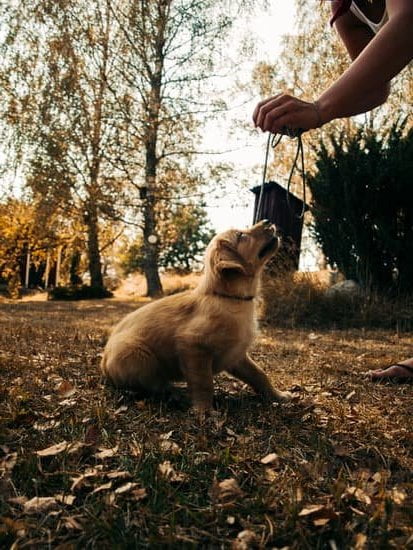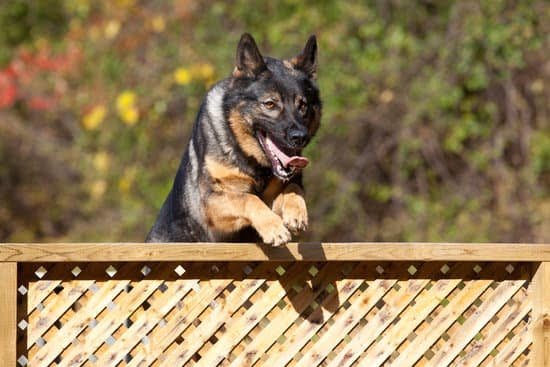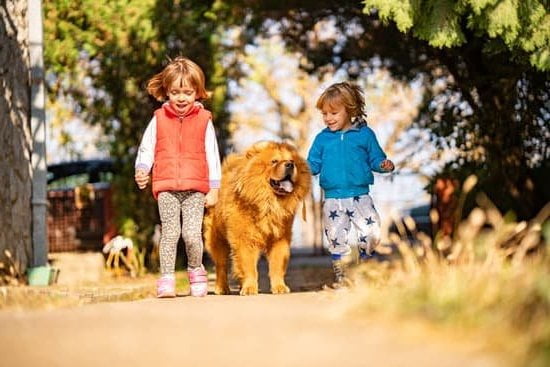How to leash train a feral dog can be a challenging and rewarding experience. Feral dogs, also known as wild or untamed dogs, have unique behaviors and instincts that require special attention when it comes to leash training. Understanding their behavior and instincts is the key to successfully training them to walk on a leash.
Feral dogs often exhibit fear, caution, and mistrust towards humans due to their lack of socialization and previous negative experiences. It is crucial to approach leash training with patience, understanding, and empathy for the feral dog’s background and circumstances.
Before embarking on the journey of leash training a feral dog, it is essential to prepare for the process by creating a safe and comfortable environment for both the dog and the trainer. This includes ensuring secure space, using appropriate equipment, and considering any potential triggers that may cause stress or anxiety for the feral dog during training sessions.
The Importance of Leash Training
Leash training a feral dog is not only essential for their safety and well-being but also crucial for the safety of those around them. Here are some reasons why leash training is so important for feral dogs:
1. Safety: Feral dogs are often unfamiliar with the dangers of urban environments and may run into the street or other hazardous areas if not properly leashed. Leash training can help prevent accidents and keep both the dog and those around them safe.
2. Socialization: Leash training provides an opportunity for feral dogs to be exposed to new sights, sounds, and experiences in a controlled manner. This can help them become more comfortable and less fearful in different environments, ultimately improving their socialization skills.
3. Legal Requirements: In many areas, it is a legal requirement for dogs to be on a leash when in public spaces. By leash training a feral dog, owners can ensure they are abiding by local laws and avoid potential fines or penalties.
In order to address the importance of leash training for feral dogs, it’s crucial to understand these benefits and necessities. By utilizing positive reinforcement techniques and taking the time to build trust with a feral dog, owners can successfully leash train their furry companions while promoting their overall well-being.
Preparing for Leash Training
Before diving into leash training a feral dog, it is crucial to create a safe and comfortable environment for both the dog and the trainer. Feral dogs may have had negative experiences with humans or may be unfamiliar with being in a confined space, so it is important to approach the training process with sensitivity and caution.
Here are some tips to prepare for leash training a feral dog:
- Secure an enclosed area: Choose a secure, enclosed area such as a fenced yard or quiet outdoor space where the feral dog can feel safe and protected. This will prevent the dog from feeling overwhelmed by unfamiliar surroundings and noises.
- Use positive reinforcement: Before introducing the leash, spend time building trust with the feral dog using positive reinforcement techniques. Offer treats, toys, and plenty of praise to create a positive association with human interaction.
- Gradual exposure: Allow the feral dog to become familiar with the training environment at its own pace. Start by simply spending time in the designated area without any pressure to engage in training activities. This will help the dog acclimate to its new surroundings before introducing the concept of leash training.
By taking these preparatory steps, you can set the stage for successful leash training with a feral dog. Creating a safe and comfortable environment will facilitate trust-building and pave the way for effective leash training techniques. Remember that consistency and patience are key when working with feral dogs, as they may require more time to adjust to new experiences compared to domesticated dogs.
Building Trust
Earning Trust Through Patience and Understanding
Gaining the trust of a feral dog is a crucial step in leash training. It’s important to understand that feral dogs may have experienced trauma or neglect, leading to fear and mistrust of humans. Patience is key when approaching a feral dog, as forcing interaction can lead to stress and aggression.
Spend time observing the dog from a distance, allowing them to become accustomed to your presence before attempting any physical contact. Offering treats in a non-threatening manner can also help build positive associations with human interaction.
Establishing Boundaries and Respect
Once the feral dog begins to show signs of comfort around you, it’s important to establish clear boundaries and respect their space. Avoid sudden movements or loud noises that may startle the dog, and always allow them to approach you at their own pace. Creating a safe and predictable environment can help the feral dog feel more secure, which lays the foundation for successful leash training in the future.
Developing a Routine for Predictability
Feral dogs thrive on routine and predictability, so establishing a consistent feeding schedule and daily routine can aid in gaining their trust. This helps the dog understand what to expect from their interactions with you, reducing anxiety and fear. Regular positive interactions during this routine, such as gentle petting or providing food, can reinforce trust and create a positive association with your presence.
By following these techniques for gaining the trust of a feral dog before beginning leash training, you can create a solid foundation for successful training sessions in the future. Remember that every feral dog has its own unique journey towards trusting humans, so it’s important to be patient and understanding throughout this process.
Introducing the Leash
Introducing a feral dog to a leash for the first time can be a challenging and delicate process. These dogs are not accustomed to human interaction or restraint, making it crucial to approach this step with care and patience. When embarking on this part of the leash training journey, it’s important to keep in mind that every feral dog will respond differently, requiring individualized attention and techniques.
Creating a Positive Environment
Before introducing the leash, ensure that the environment is calm and free from any potential triggers that may cause anxiety or fear in the feral dog. Choose a quiet and enclosed space where distractions are minimal. This can help ease the dog into the unfamiliar experience of being leashed for the first time.
Gradual Exposure
Begin by allowing the feral dog to familiarize itself with the sight and smell of the leash. Simply place it near areas where the dog spends time, such as its sleeping area or feeding spot. The goal is to make the presence of the leash feel less intimidating and more familiar to the dog over time.
Positive Association
To create a positive association with the leash, consider using treats or rewards during this stage of training. When the feral dog shows curiosity or interest in the leash, reward it with treats and praise. This helps reinforce positive behavior and builds trust between you and the dog. Gradually move on to allowing the dog to sniff and explore the leash on its own terms before attempting to put it on.
By taking these gradual steps and being patient with the process, you can help ease a feral dog into accepting and eventually wearing a leash for training purposes. Remember that every small success is worth celebrating, as it brings you one step closer to achieving successful leash training with your feral companion.
Positive Reinforcement
Positive reinforcement is a highly effective method when it comes to leash training a feral dog. This technique involves rewarding the dog with treats, praise, or affection when they display the desired behavior, such as walking calmly on the leash. By using positive reinforcement, you can motivate the feral dog to repeat the behavior, making the training process more successful and enjoyable for both the dog and the trainer.
When using positive reinforcement in leash training, it’s important to use high-value treats that the feral dog finds most enticing. This could be small pieces of cooked chicken or cheese. By offering these special treats during training sessions, you can create a positive association with walking on a leash and make it a rewarding experience for the dog. Additionally, verbal praise and gentle petting can also be used as forms of positive reinforcement to further encourage good behavior.
It’s essential to remember that positive reinforcement should be used consistently and immediately after the desired behavior is exhibited. This helps reinforce the connection between the action and the reward, increasing the likelihood of the behavior being repeated. With patience and consistency, positive reinforcement can be an incredibly powerful tool in successfully leash training a feral dog.
| Positive Reinforcement Techniques | Benefits |
|---|---|
| Use high-value treats | Motivates the feral dog to cooperate during training |
| Offer verbal praise and gentle petting | Creates positive associations with leash training |
| Consistent use of rewards | Reinforces desired behaviors effectively |
Overcoming Challenges
Feral dogs, unlike domesticated ones, have a more challenging background that requires special attention when it comes to leash training. When attempting to train a feral dog, you may encounter common challenges and obstacles that are not present when training a dog that has been socialized from a young age. Understanding these challenges and knowing how to address them is crucial in successfully leash training a feral dog.
One of the most common challenges encountered when leash training a feral dog is fear and anxiety. Feral dogs often have had limited human interaction, if any at all, so the concept of being leashed or walked on a lead can be incredibly distressing for them.
It’s important to address this fear by first gaining the trust of the dog before introducing the leash. Using positive reinforcement techniques and allowing the dog to approach the leash on their own terms can help alleviate some of this fear.
Another challenge that may arise during leash training is resistance to the leash itself. Feral dogs may react negatively to having a foreign object attached to their collar or harness, leading them to pull, thrash, or attempt to remove the leash altogether. Patience is key in addressing this challenge, as it may take time for the dog to become accustomed to the sensation of being restrained by the leash. Consistent practice and gentle encouragement can help in overcoming this resistance.
Additionally, another obstacle that may be encountered when training a feral dog on a leash is redirection issues. Feral dogs are often easily distracted by their environment due to their heightened senses and instincts for survival. This can lead to pulling and erratic behavior while on leash. Implementing consistent training methods with positive reinforcement can help redirect their attention back towards their handler and discourage pulling behaviors.
| Common Challenges | How to Address |
|---|---|
| Fear and Anxiety | Gaining trust before introducing the leash; using positive reinforcement techniques |
| Resistance to Leash | Patience; consistent practice; gentle encouragement |
| Redirection Issues | Consistent training with positive reinforcement; redirecting focus back towards handler |
Consistency and Patience
Consistency in training means establishing a routine for the dog to follow. This routine can include regular feeding times, exercise, and designated training sessions. By providing a consistent schedule, the feral dog will start to feel more secure in their environment, making it easier for them to adapt to leash training. Additionally, consistency in commands and expectations will help the dog understand what is required of them during the training process.
Patience is crucial when working with feral dogs as they may not respond immediately to leash training. It’s important to remember that every dog is different and progresses at their own pace. For many feral dogs, this may be slower than expected due to their past experiences. By remaining patient and understanding, you can create an environment where the feral dog feels safe and supported as they learn how to walk on a leash.
When learning how to leash train a feral dog, keep in mind that consistency and patience go hand in hand. Consistently implementing positive reinforcement techniques while exercising patience will contribute significantly to the success of leash training efforts for feral dogs.
Progress Tracking
Once you have begun the process of leash training a feral dog, it is important to track and monitor their progress. This will not only help you identify any areas that need improvement but also allow you to celebrate the small victories along the way. One effective way to track progress is by keeping a journal or log where you can record each training session, the dog’s reaction to the leash, and any improvements or setbacks experienced.
In addition to keeping a written record, it can also be helpful to use visual aids to track progress. Consider taking pictures or videos during leash training sessions to observe any changes in the dog’s body language, comfort level with the leash, and overall behavior. Comparing these visual cues over time can provide valuable insights into how your feral dog is responding to the training and help you make necessary adjustments.
Furthermore, enlisting the help of a professional dog trainer or behaviorist can be beneficial in monitoring progress. A trained expert can provide an objective assessment of your dog’s development, offer valuable insights and recommendations for improvement, and support you in addressing any challenges that may arise. By seeking professional guidance, you can gain a clearer understanding of how your feral dog is progressing with leash training and receive tailored advice on how to continue moving forward.
Celebrating Success
In conclusion, leash training a feral dog is a challenging but rewarding endeavor. It requires understanding the behavior and instincts of feral dogs, as well as the importance of gaining their trust before introducing them to the leash. Creating a safe and comfortable environment for training, using positive reinforcement methods, and being consistent and patient are all crucial elements of successful leash training. It’s important to celebrate every small victory and milestone achieved throughout the process.
One of the most significant aspects of leash training a feral dog is building trust. By taking the time to gain the dog’s trust and establish a bond, you lay a foundation for successful leash training. Understanding their individual needs and progressing at their pace can ensure a positive experience for both the dog and trainer.
Tracking progress is essential in leash training a feral dog. By monitoring milestones achieved and celebrating even small successes, you can boost your dog’s confidence and motivate them to continue improving.
Remember that every step forward, no matter how small, is worth recognizing and celebrating. By following these tips on how to leash train a feral dog while being consistent, patient, and celebratory along the way, you can look forward to long walks with your furry friend in no time.
Frequently Asked Questions
How Do You Get a Feral Dog to Walk on a Leash?
Getting a feral dog to walk on a leash takes patience, consistency, and positive reinforcement. Start by introducing the leash slowly, use treats to encourage them to move with it, and gradually increase the distance of the walk.
How Long Does It Take a Feral Dog to Adjust?
The adjustment period for a feral dog can vary greatly depending on their individual experiences and personality. Some may take weeks or months to adjust to a new environment and learn to trust humans, while others may take longer.
How Do You Get a Feral Dog to Trust You?
Building trust with a feral dog takes time and patience. Avoid making sudden movements or loud noises, provide regular meals, spend time near them without forcing interaction, and let them approach you at their own pace. Consistency and positive reinforcement are key.

Welcome to the blog! I am a professional dog trainer and have been working with dogs for many years. In this blog, I will be discussing various topics related to dog training, including tips, tricks, and advice. I hope you find this information helpful and informative. Thanks for reading!





